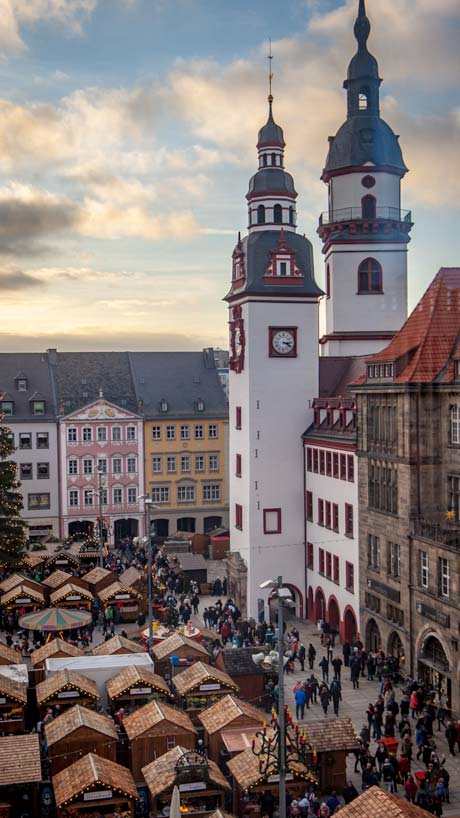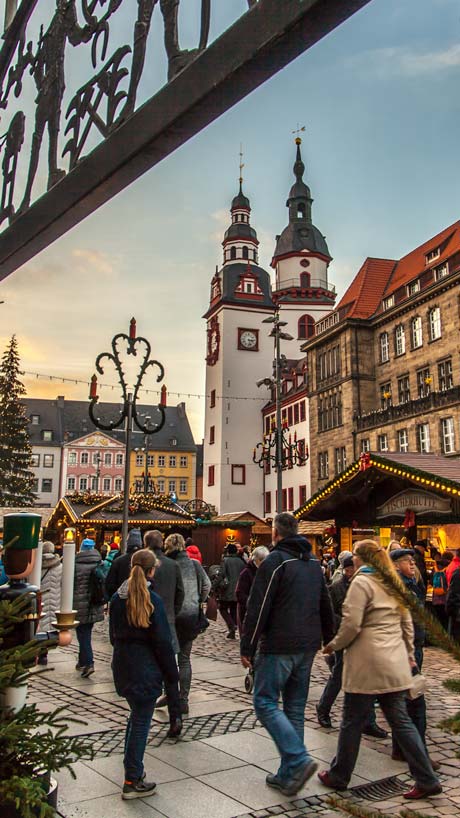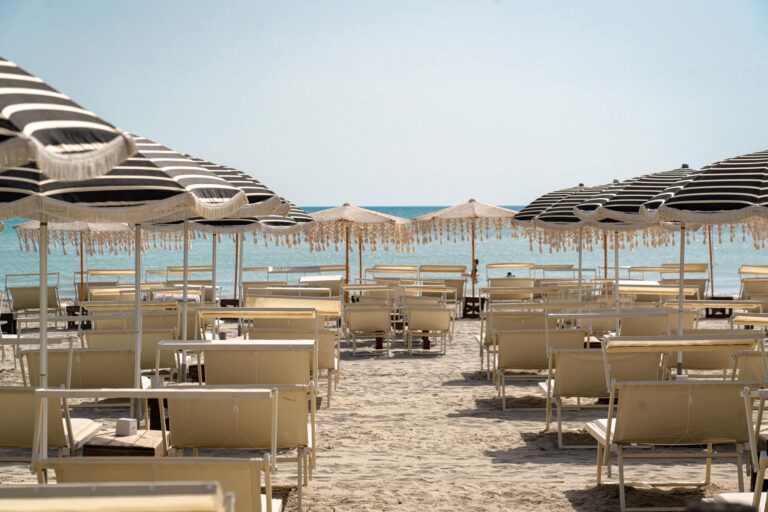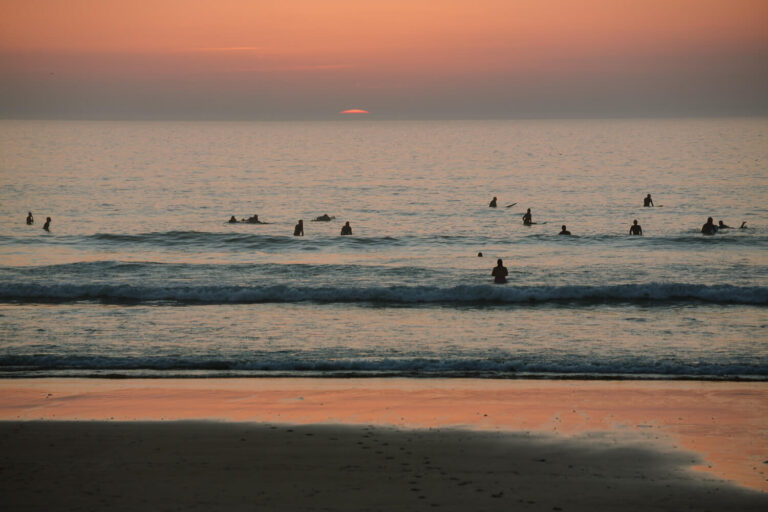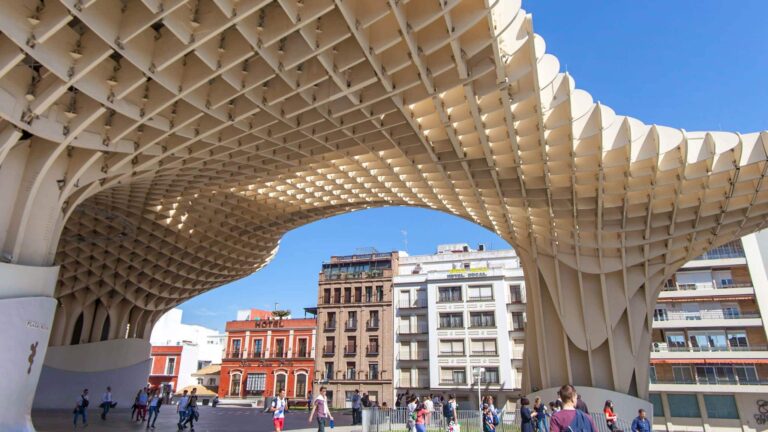Traditions, Toys and All the Trimmings: Christmas in Seiffen and Germany’s Ore Mountains
If Christmas were a place, I imagine it would look a lot like this. Behind me, the windows of multicoloured wooden cottages are glowing in soft, golden candlelight; to my right, row-upon-row of shops selling homemade festive decorations and gifts have been hard at work since the last time Santa came to town; and beyond, snow-coated mountains carry the stories of miners’ festive traditions. Seiffen may be but a mere speck on Germany’s map, but when it comes to Christmas, this teeny town is as much a seasonal staple as Mariah Carey, mulled wine and twinkling fir trees.
Far from the over-commercialised Santa Villages in Lapland and the charming-yet-crowded German Christmas Markets, Seiffen, tucked away in Saxony’s Ore Mountains, is everything the festive season should be. Woodworkers craft toys as they have for centuries. Miners’ traditions dictate dining and underground celebrations. And Christmas markets have enough glühwein and glee to keep even the most die-hard festive travellers giddy.
But unlike most other festive markets that pop up in the last week of November and disappear by early January, Seiffen feels timeless in its dedication to Yuletide — mainly because it is. Here, Christmas isn’t just for Christmas; it’s a year-round affair of all things festive. And for those who make the detour from the region’s favoured Dresden Christmas Markets, you’ll find yourself in a real-life fairytale pop-up book.
Detours from Dresden
Leaving a long weekend in Dresden of Christmas markets and perhaps one too many glühweins behind, I set off south towards the Ore Mountain. It only takes a little over an hour to drive to Seiffen, snuggled by the Czech border, but there was one important festive stop en route I couldn’t miss: the Nussknackermuseum.
As much a Germany Christmas component as stollen and stockings, the iconic soldier-like Nutcrackers have been a part of the nation’s folklore for centuries. In the small village of Neuhausen — a cluster of forest-enveloped homes and a 12th-century white-as-snow castle — the Löschner family have been collecting these practical and pretty wooden tools for over fifty years. Inside their award-winning dedicated museum, a 6000-strong assemblage of nutcrackers is on display, including the largest functional nutcracker in the world.
Alongside the vast collection of nutcrackers, which hail from all corners of the globe, other festive oddities feature, such as the world’s largest music box and a kid-friendly witch’s house. It’s a fitting location for these detailed dolls to find a home, as it was here in the Erzgebirge region (the German name for the Ore Mountains) that the German Nutcracker was born. The story goes that in the 17th century, a farmer wanted an easier way to crack open nuts, and while various options were proposed by the locals — such as shooting or sawing them — it was a puppet maker who created the now-famous dolls to aid the farmer in enjoying his nuts with ease.
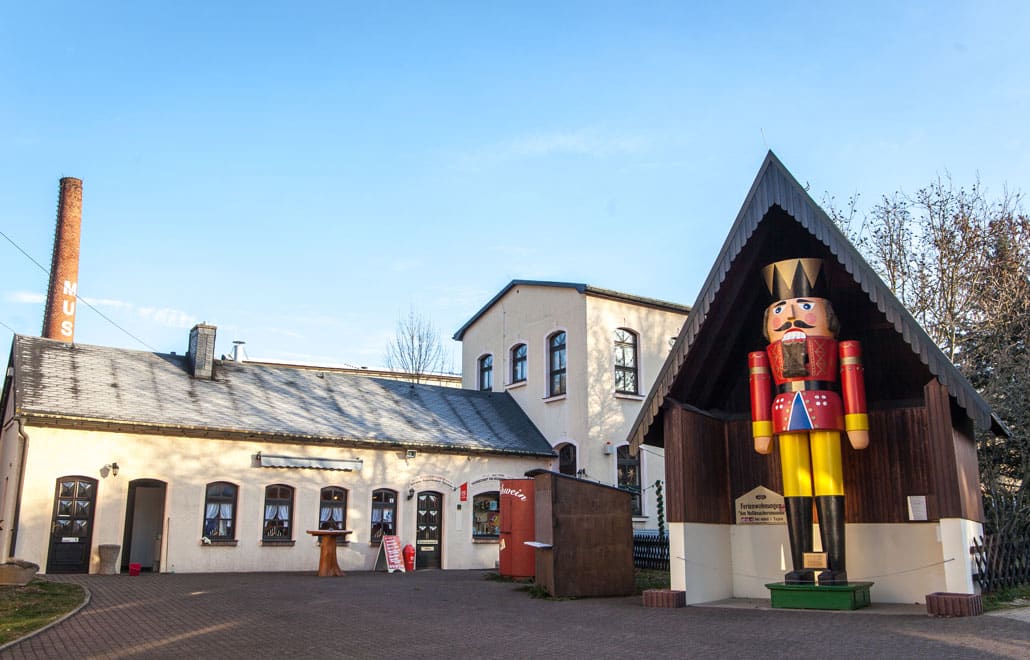
Welcome to Seiffen, where Christmas is a year-round affair
Arriving in Seiffen after a scenic drive through the first snowfall of the year, I instantly felt like a kid in a chocolate factory. There was something ‘authentic’ about the festive atmosphere here. Of course, the numerous retail stores were clearly not handing out their goods for free like Santa would fill stockings, but it felt far from the commercialised version of Christmas I had expected.
Perhaps it’s because many of the age-old traditions that are abundant in the Ore Mountains still cling to their roots. It was the miners’ who made these towns — both figuratively and literally — some 700 years ago when the first excavations of the region’s mineral-rich rock began. The industry started to collapse in the 1700s and died its final death in the mid-19th century, leading skilled workers to start using their craftmanship in other ways. Turning their talent to woodcraft, they had no idea that in the future, Seiffen would become known as Spielzeugdorf (the Toy Village), making it one of Europe’s best winter destinations.
But while the act of mining was abandoned, I’d quickly learn that the mines themselves and the ingrained Christmas traditions were not. Every year, traditional miners’ bands trace protected parade routes, return underground for concerts, and dish up the dishes that were once longed for after an intensive period deep in the quarries.
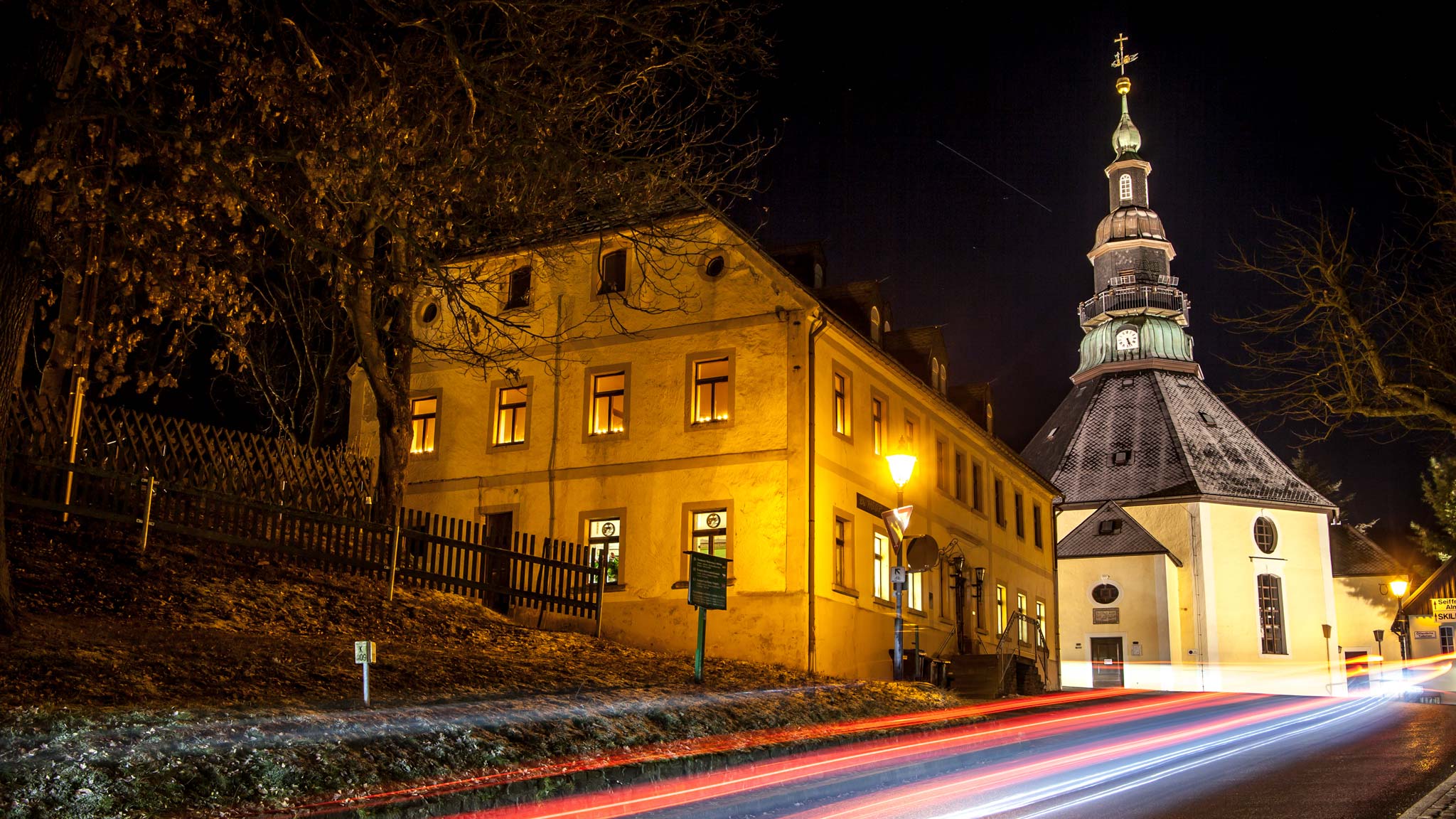
Christmas concerts by candlelight
Armed with a hard hat and torch, a formally dressed trombone player signals the entrance of the Herkules-Frisch-Glück Mine. Following in the footsteps of the first workers who inaugurated the mine back in 1705, I dutifully enter the subsurface tunnel. Damp walls and dimly lit tree trunks lead the way for some 500 metres until the warmth of a candlelit cave wraps around me. Hundreds of naked flames flicker in all corners, precariously balanced on the hacked rockface. Quickly, a glühwein and a slice of bread laden with goose fat are passed my way.
Arguably, of all the old miners’ traditions that have been purposefully preserved, the Mettenschicht is the most special, and I instantly feel grateful that I’d arranged a ticket ahead of time. Harking back to days of yore, the Mettenschicht was the customary celebration of the last shift before Christmas, when the gruelling days would wrap up earlier than usual. Workers would come together to enjoy a festive end-of-year send-off with traditional treats, music and merriment.
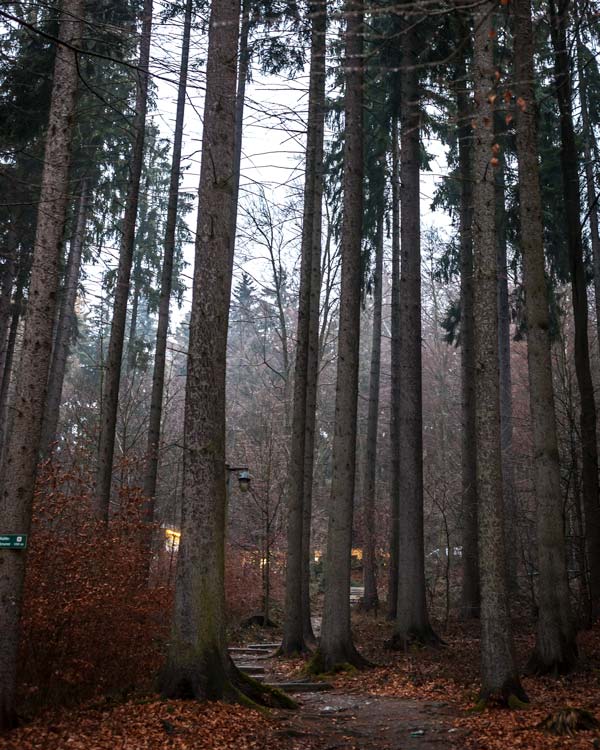
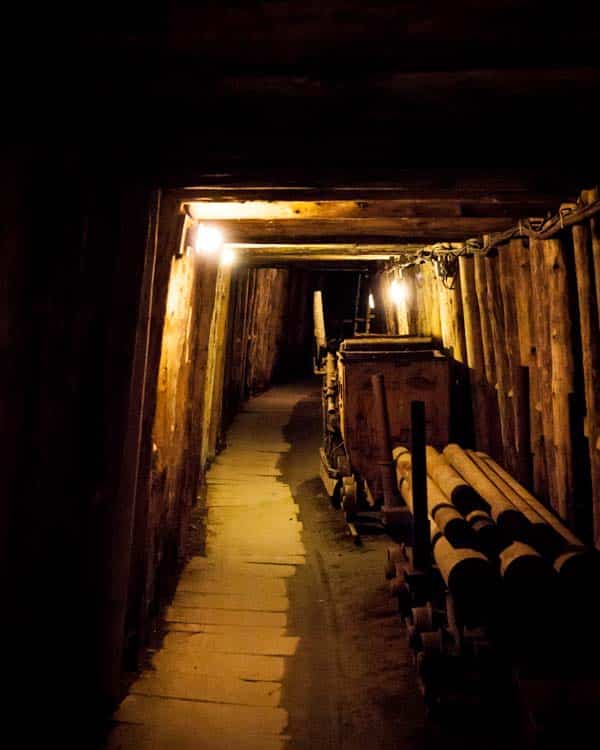
Continued until this day, albeit in a more performative form, mining associations across the Ore Mountains host these recreations in the lead-up to Christmas. As we settle into our seats, excitement brews as we’re about to be treated to a show as it would have been back in the day: religious readings, brass band performances, and heavenly hymns reverberating from the unique acoustics.
While much of the humour that’s causing considerable chortling in the cave goes over my head due to the language barrier, the experience is still outstanding. Following a particularly angelic performance by a solo candle-lit choir boy, the audience roars, rising for a standing ovation. Apparently, I was the only out-of-towner who had attended today’s show, and I was now facing much fascination about what had brought me to this underground world, a plethora of suggestions of how to fill my days in Seiffen unfurling.
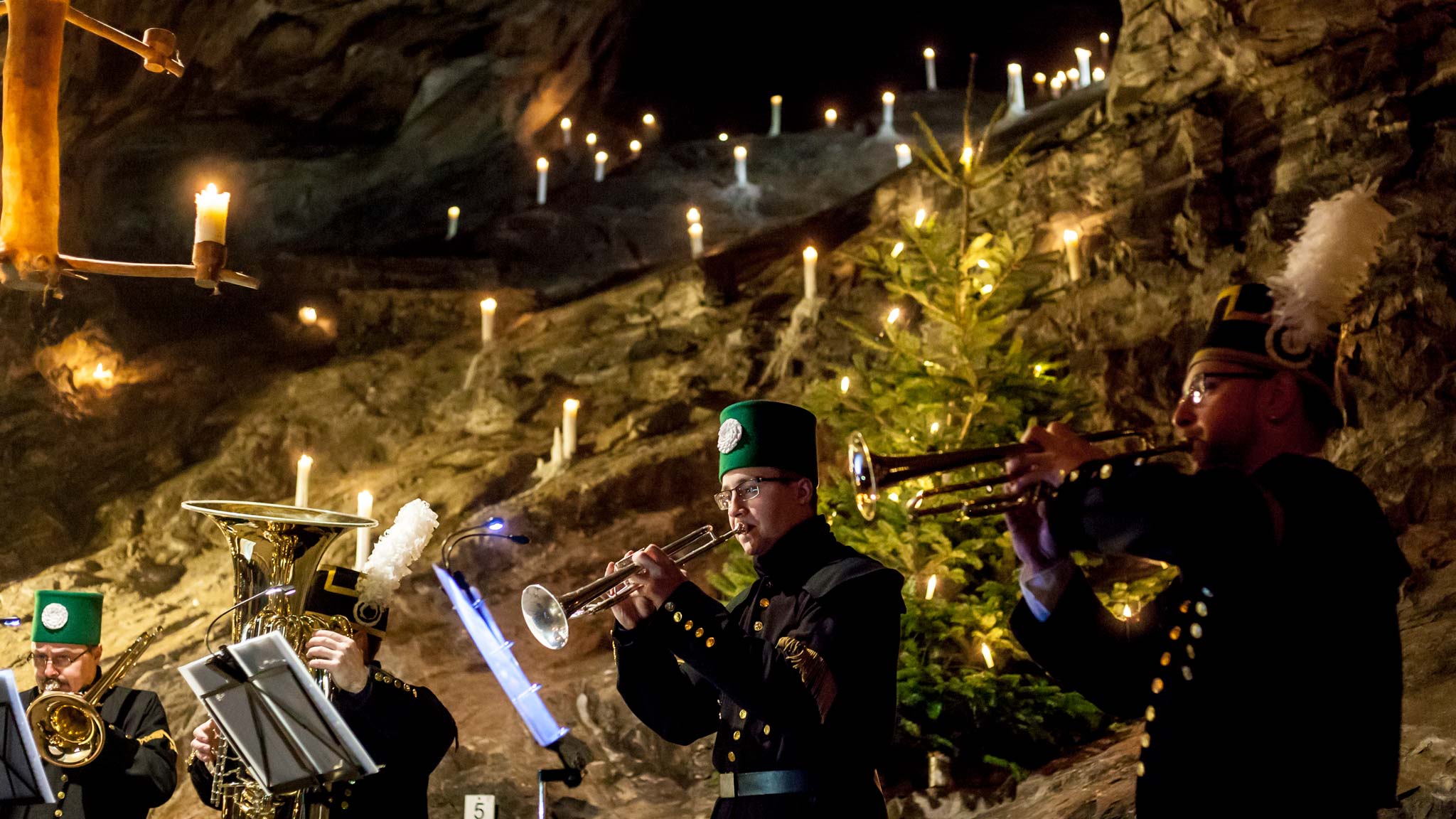
Traditional Ore Mountain’s feasts and hospitality
Back above ground, the winter night was closing in, chaperoned by a fresh flurry of snow. But the day’s taste of the old miners’ life was far from above; an end-of-work extravaganza was just the start of their Christmas celebrations.
Once tools had been downed and the miners were reunited with their loved ones, a Christmas Eve homecoming feast would be awaiting. Known as the Neinerlaa Dinner, the nine-course menu was an indulgent banquet, certainly a welcome sight for those who were accustomed to simple meals underground. Tonight, it was my turn to sample this tempting table — all in the name of tradition, of course.
As each dish arrived, I was taken not just on a tasting tour but also on one of old beliefs. Each of the Neinerlaa plates holds a different meaning, ranging from ensuring health and wealth to change and grain. Only the mother of the house is allowed leftovers on her plate; if anyone else leaves even a morsel, good fortune for the next year wouldn’t be guaranteed.
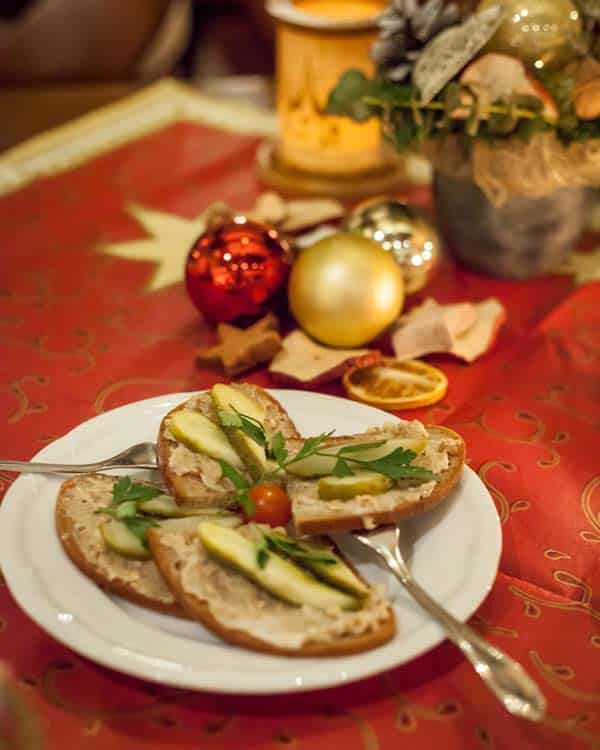
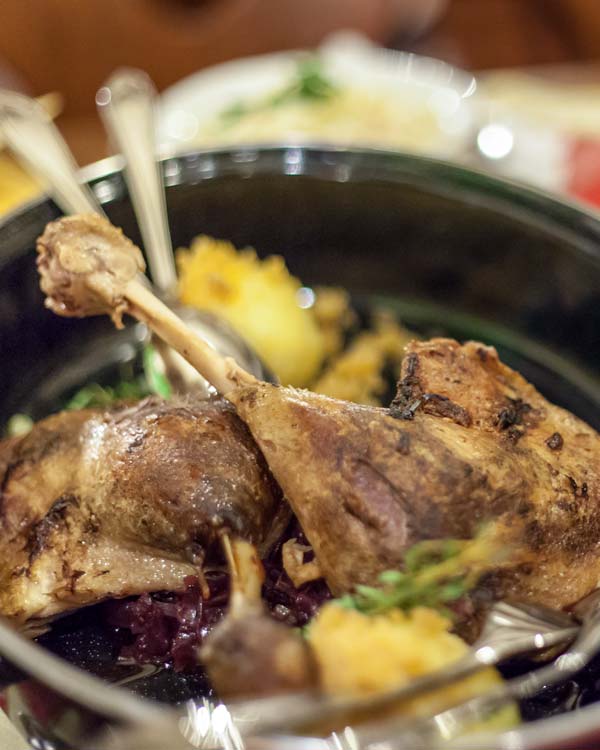
Bratwurst, dumplings, sauerkraut and roasted goose legs laden the table one by one — with celery, salt, bread and blueberries also being essential items to ensure the fulfilment of dreams in the year to come. Eager not to give myself a post-Christmas curse, I polish off every last bite. By bedtime, I’m still bursting. Thankfully, my cosy room is just a short crawl upstairs.
In the family-run Hotel Erbgericht Buntes Haus, the hospitality is as delicious as the restaurant’s dishes. Literally translated to ‘Colourful House’, the accommodation doesn’t disappoint. Canary yellow and azure hallways are adorned with playful, festive toys sitting outside each bedroom, while the whole place is kitted out like a Christmas card. From my street-facing room, I peer out on the mini Christmas market below, where bobble hats and scarves crowd around warming flames. Flicking off the lights, I fall asleep to the jingle of festive tunes and the scent of mulled wine wafting through the window.
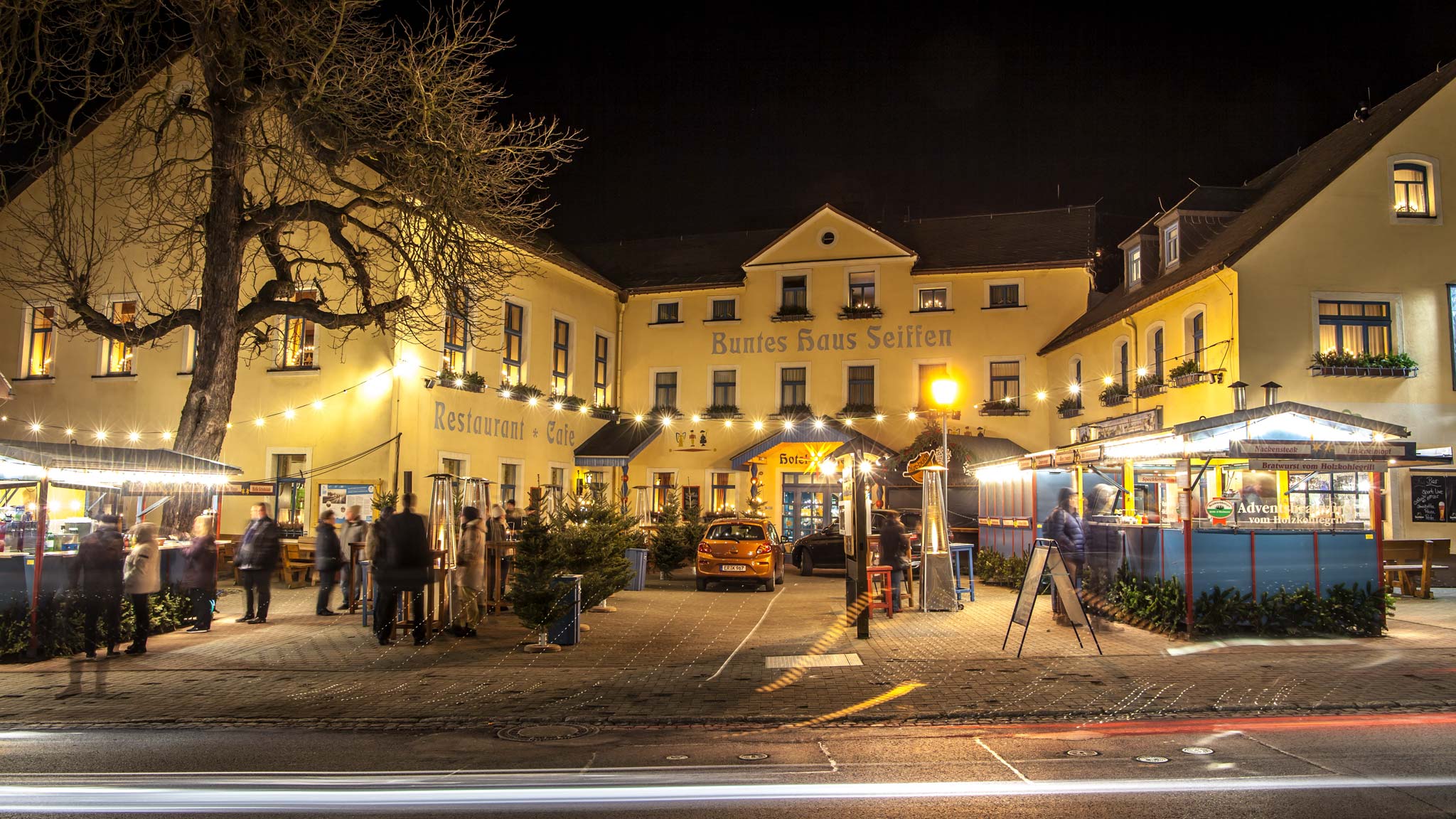
Woodwork workshops and open-air history
The next morning, eager to learn a little more about Seiffen’s woodwork story, I set off to the slightly out-of-town Erzgebirgisches Freilichtmuseum. With a fresh coat of snow on the ground, the open-air museum of traditional workshops housed in fourteen adorable wooden homes could feature on any Christmas card.
Pushing the door of the noisest cabin ajar, I half expect to see an army of Santa’s elves hard at work scanning children’s scribbled letters and crafting made-to-order gifts. But there were no supernatural creatures to be seen. Inside stood only one man, a vast array of tools, and a flurry of wooden chips raining down like an industrial-sized snow globe.
Seemingly oblivious to my arrival, he continues staring intently at a fast-rotating wooden wheel. I don’t mind at all; I’m enthralled by his concentration. His hands guide the timber, which spins faster than my eyes can calculate. Suddenly, a chisel appears, and as an exhausted-sounding machine shudders to a halt, another piece of what will clearly be a complicated puzzle is complete.
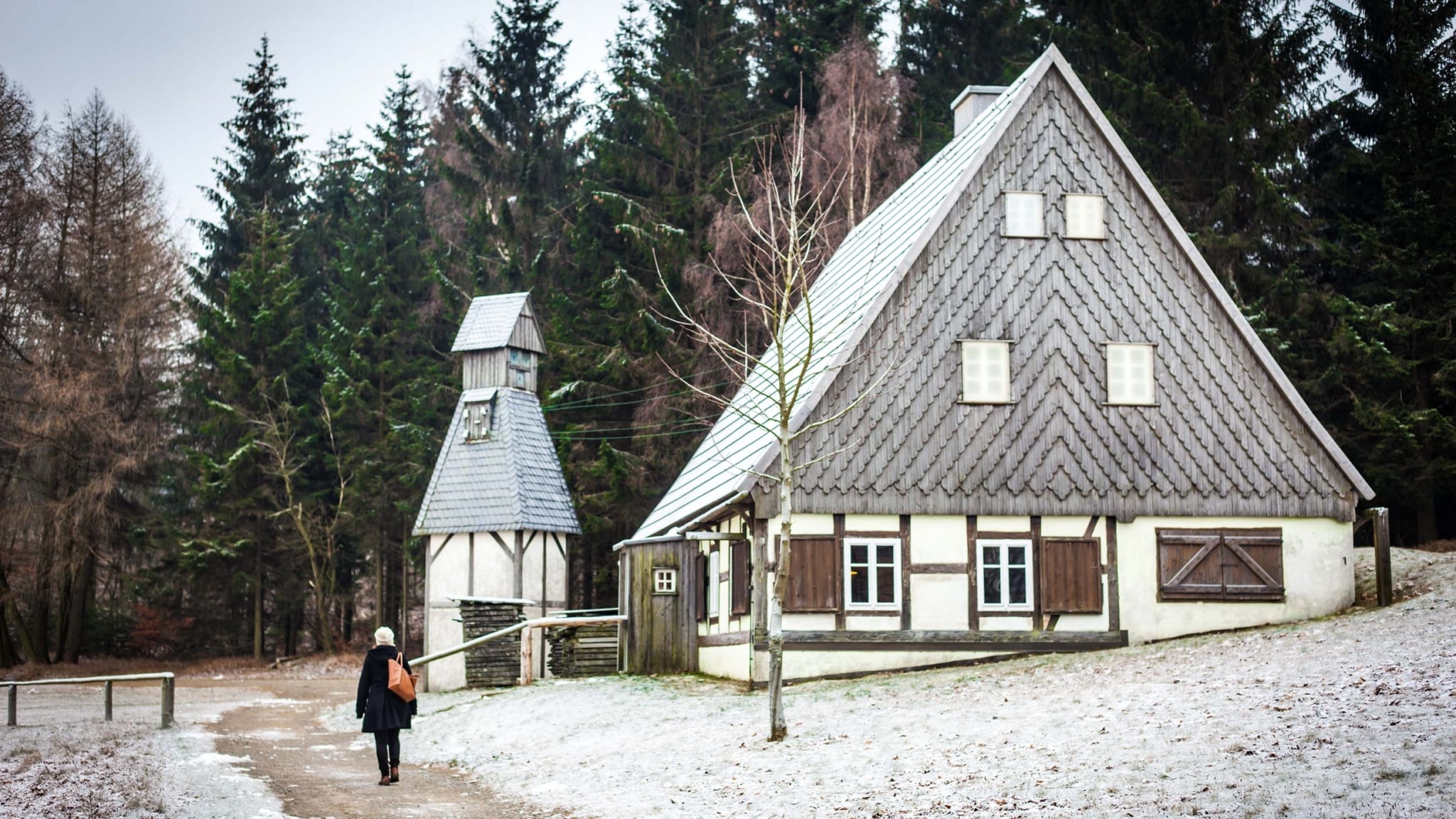
We exchange pleasantries, and I quickly learn that while no elves or folklore are powering these single-man factories, these methods are nearly as rare as mythical characters. The artisan explains that he is one of only eight Ore Mountain Reifendrehen (ring turners) who still retains the skills, knowledge and (perhaps most importantly) the will to continue crafting toys in the most traditional of ways; I had unknowingly been watching another masterclass in old miners’ traditions.
Letting the gentleman return to work, my gaze lingers long enough to border on awkward. The smell of wood that accompanies every new shaving is intoxicating, and as each newly completed piece is laid out on the table opposite, I feel like a kid opening multiple advent calendar windows all at once. Of course, crafting toys and decorations in a method like this is no quick-fix job. To see the finished product, I must head to another showroom.
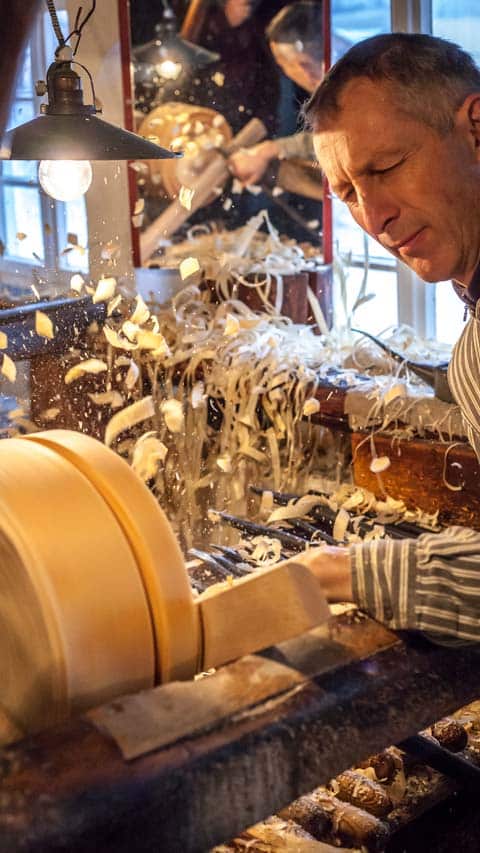
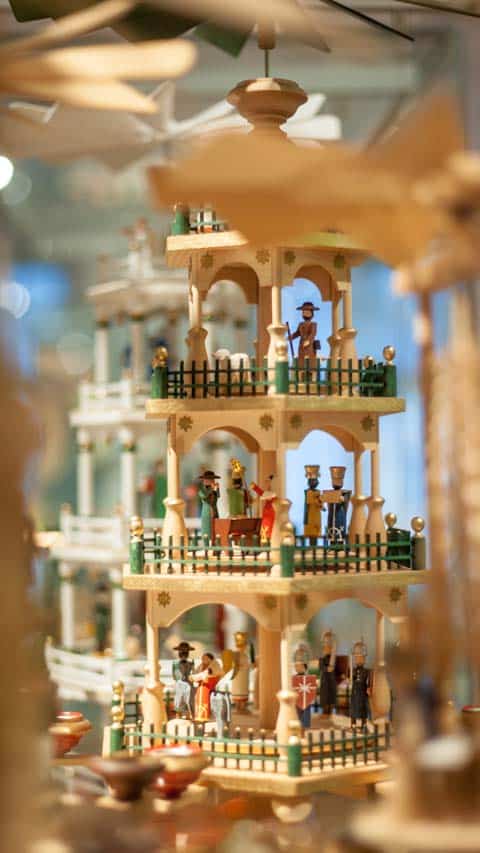
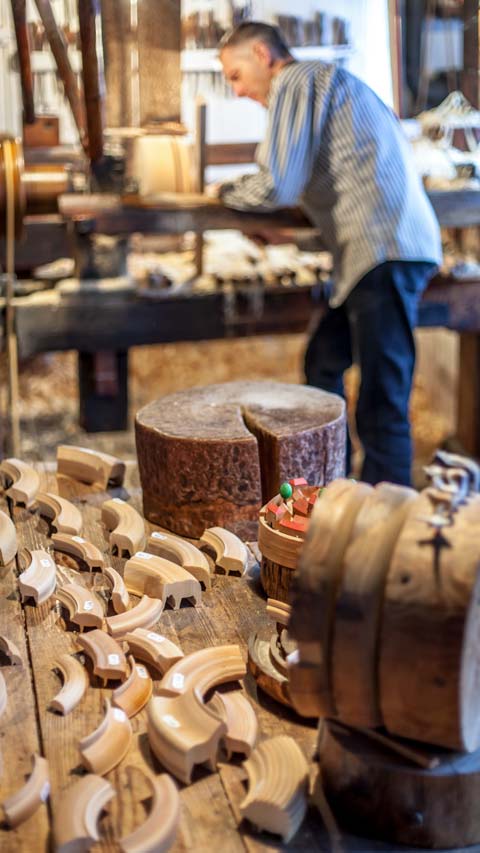
The Christmas Toy Town
Returning to Seiffen, I dip inside the Spielzeugmuseum. The festive space is as much a testament to how the miners adapted following the closures of the pits as the toys themselves. Housing a collection of countless playthings spanning more than a century, some of the very first wooden objects produced in the Ore Mountains in a post-mining economy are proudly on display.
Seiffen’s road to becoming the Christmas Toy Town wasn’t always set in Ore, though. Initially, the Reifendrehen’s work was far more practical. Bowls, spoons, and various kitchen objects — and even a whole church, as I’d discover later — were the first items produced in the almost-forgotten town’s workshops. By the mid-18th century, well-versed hands were able to craft much more intricate items from the region’s endless bounty of tree trunks, and in a town where Christmas had always been hallowed, toys became the go-to.
Farmsets of all proportions, spinning wheels, and matchboxes hiding the teeniest of sets of wooden toys all feature, doubling as a reminder of how much both gifts and toys, but the essence of Christmas itself, has shifted in the previous decades. Toymaking is as ingrained in Seiffen’s DNA, and over time, more and more German festive staples set up shop here.
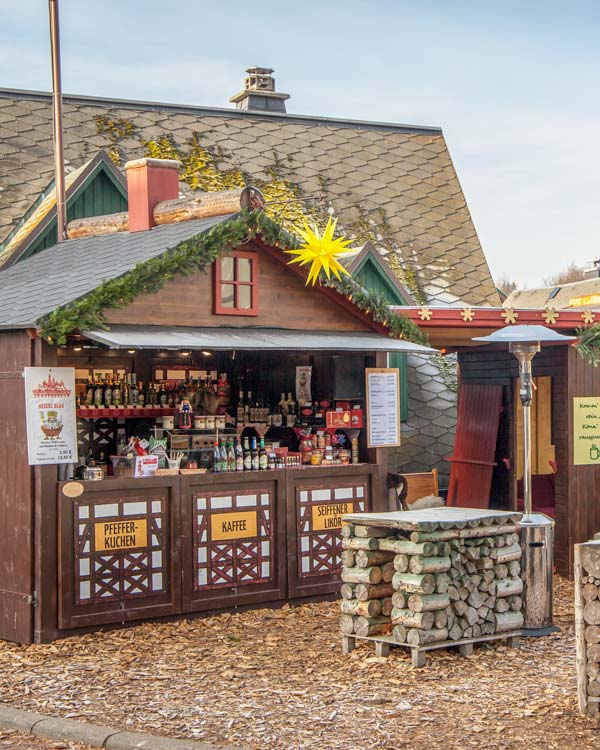
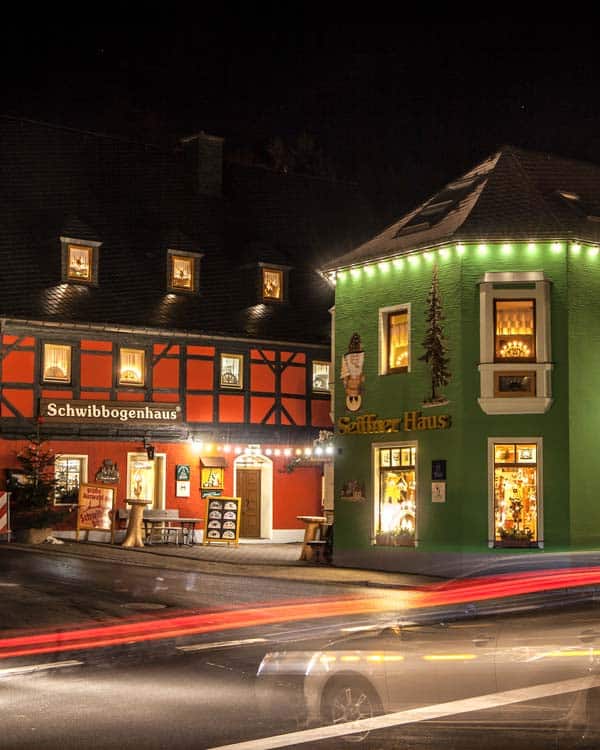
Where angels get their wings
A few doors down, the windows of Wendt & Kühn-Figurenwelt tempt me inside. In the centre of the store, a life-size music box spins, angels and Christmas figures slowly twirling by. Behind, courtesy of the plaques on display, I quickly get a history lesson.
Since 1923, these iconic angels have become a cherished favourite, and even collectable, of not just Germans but international audiences. The very first version that was produced by the family-founded business, the Eleven Dot Angel, was designed by Grete Wendt herself — a noted business achievement for a woman in the male-dominated mining days.
Clearly, the company has expanded its offerings and angel iterations since, yet the excited shoppers around me still seem to fixate on the original, green-winged, white-dotted angels who were strung throughout the store, peacefully floating while waiting for their new home atop the Christmas tree.
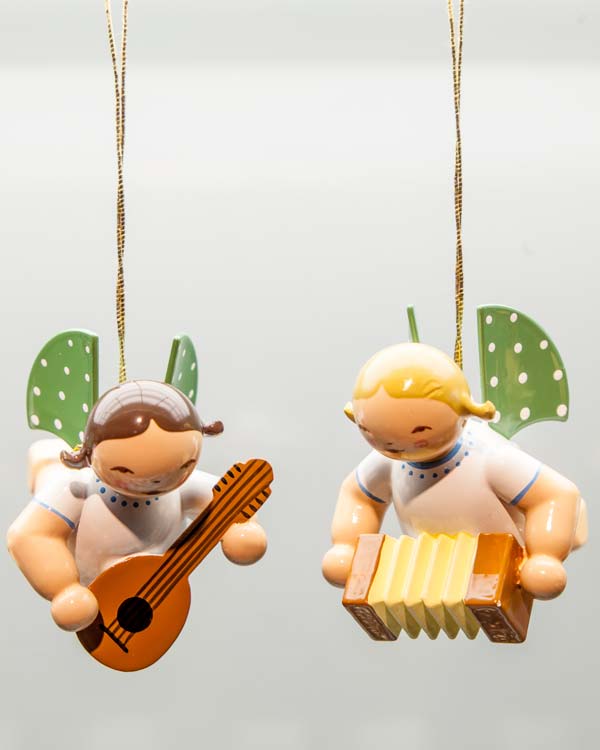
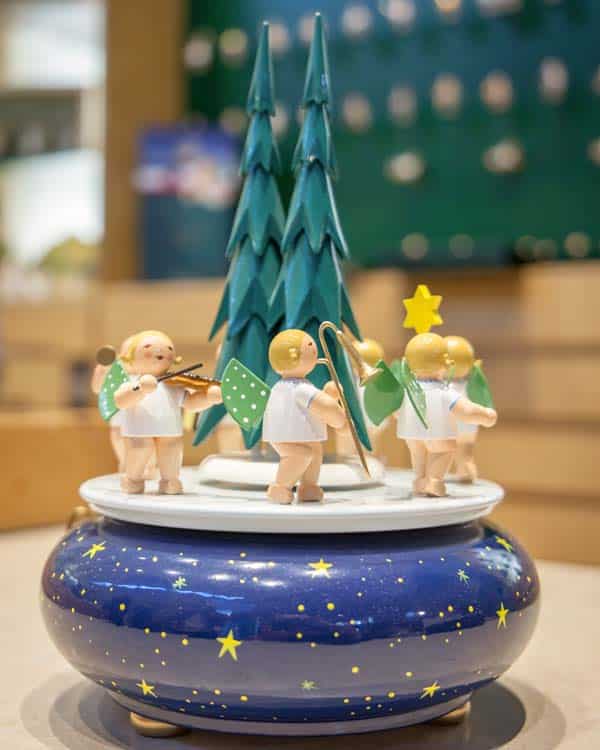
The miners’ mountain church
Just before leaving Seiffen, I pay a visit to the town’s beloved Bergkirche, expecting the small house of worship to have its doors bolted. Yet today was my lucky day; the warden was around and happy to show me around.
Had I not known the history of this curiously octagonal-shaped church, I would have likely skipped town without stopping for a peek. By European standards, it’s not much to look at, yet as with many places in the Ore Mountains, it comes with a hardworking and heartwarming story.
This church played such a central part in Seiffen’s life that it’s been upgraded numerous times since its inception. And while it’s sat in this position for centuries, and the original rectangular building and then Baroque decor has gone, new additions and iterations have been added and adapted over the years.
As with the Toy Museum, much of what you see today is courtesy of the freshly out-of-work miners’ who turned their time and attention to upgrading the place where their quarterly church service, which allowed them to return home from the mines briefly, was held. Each new addition proudly states the date and year it was added, and it seems a fitting place to bid Seiffen farewell as I continue deeper into the Ore Mountains.
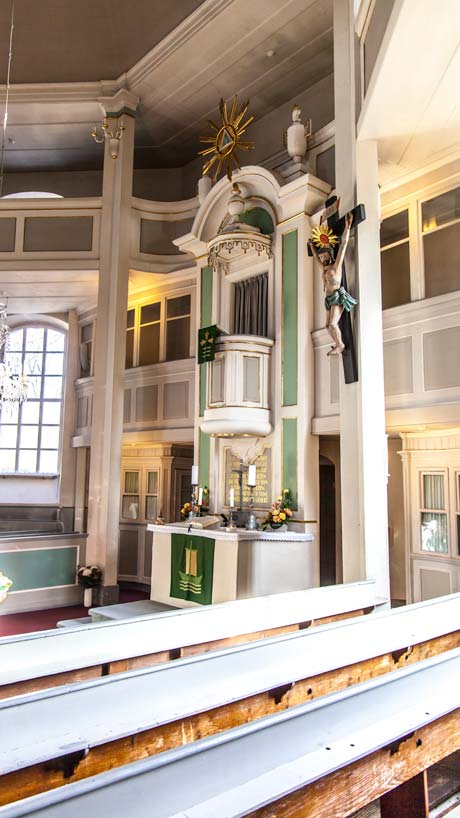
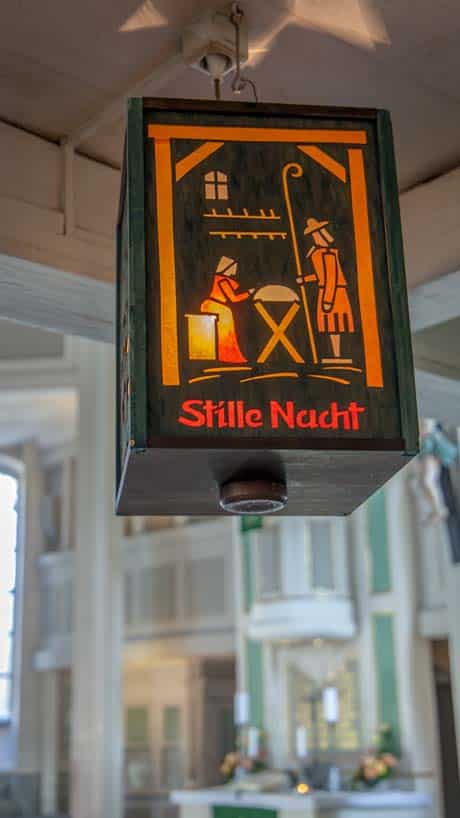
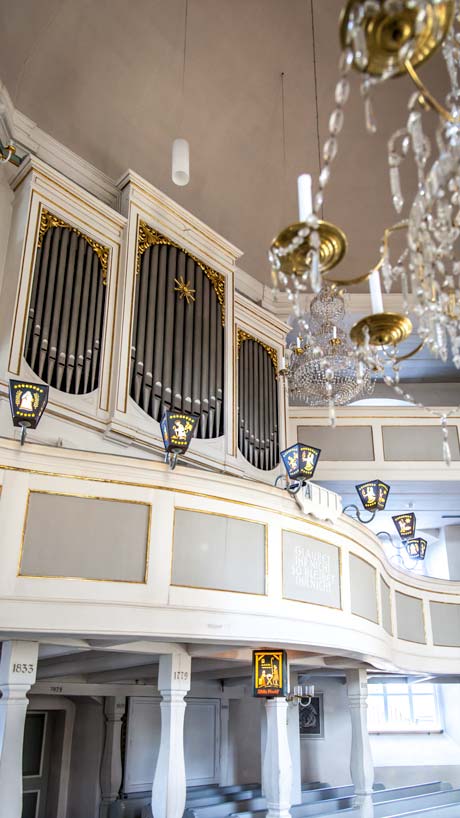
In search of scents
Tracking the Czech border for around an hour, I resist the temptation to turn right towards Annaberg — apparently, it’s home to one of the region’s most adorable Christmas Markets — and continue to the small village of Sehmatal-Neudorf instead; my nose had a date to attend.
Around the same time as woodwork was going mainstream in Seiffen, a young man in Neudorf was growing his own creative ideas in the face of an economic crisis. In the 1930s, the first HUSS Incense Cones (Räucherkerzen) were sold, but sadly the business faltered not long after. Fast forward some 50-odd years, and Jürgen Huss, grandson of the inventor, decides it’s time to rebirth the family business and resume the production of these fine charcoal and resin-formed incense sticks back where it all started.
Stepping into the workshop, the aromas hit me faster than a snowball. An eager voice encourages me to get my nose close to the nearly all-natural ingredients laid out in bowls on the soot-stained desk. I breathe in the scent of honey and villa alongside smells I can’t quite establish and simply declare them as ‘festive’.
Soon, a talented Räucherkerzen maker appears. Rolling up his sleeves, he gets to work. It’s all a bit like cooking; ingredients are weighed and measured into a bowl, mixed and kneaded, and then rolled into tubes and sliced like potato tots. The final seconds are spent shaping the conical point, which I’m informed — between fast-paced thumb-pinching —will burn for longer. In just a few minutes, a box worth is lined up on the table in front of me.
Having perhaps slightly overestimated my abilities, I’d signed up for the workshop to make my own box of cones to bring home with me — how hard could it really be? Well, my answer slowly came in a cluster of misshaped bullet-like lumps I embarrassingly forced into the packet; my family back home was now destined to receive a slightly less personal but much more presentable set of cones from the gift shop instead.
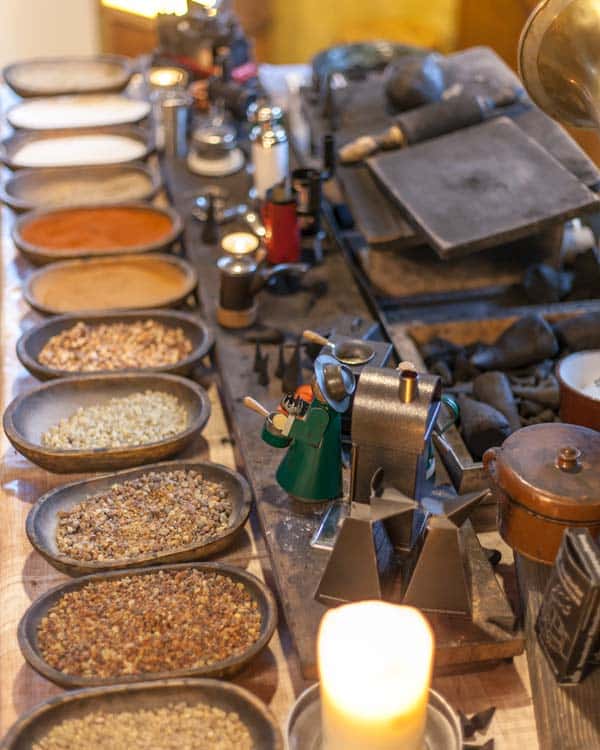

Continuing to Chemnitz
The final stop on my Saxony Christmas tour is Chemnitz, which is scheduled to coincide with a huge miner’s parade. Considered one of the best places to visit in Saxony at Christmas, the region’s third-largest city was nearly decimated in WWII. This created a forward-thinking collection of architecture around the reconstructed historic core, one of the reasons the defacto capital of the Ore Mountains is now destined to be the European Capital of Culture in 2025.
Fittingly, many of the city’s windows were decorated in Schwibbögen, a typical arched candle holder that reflects the shape of a cave. Traditionally, these glowing beacons served as a calling light at each home’s window, signalling for the miners to return home for Christmas. And on the eve of the first Sunday in Advent, that’s exactly what happens — the typical call of the hymn “Glück auf, der Steiger kommt“, signalling the start of this age-old tradition.
I jostled amongst the crowds which lined Chemnitz streets two or three deep. Everyone’s enthusiastic to witness the numerous mining associations from across the Ore Mountains reuniting for a march through the city. Dressed up the nines in matching uniforms, the show starts quickly, as brass bands and drums echo throughout the historic centre. With some 1000-plus marchers bringing festive cheer to a still snowless Chemnitz, the parade lasts well over two hours.
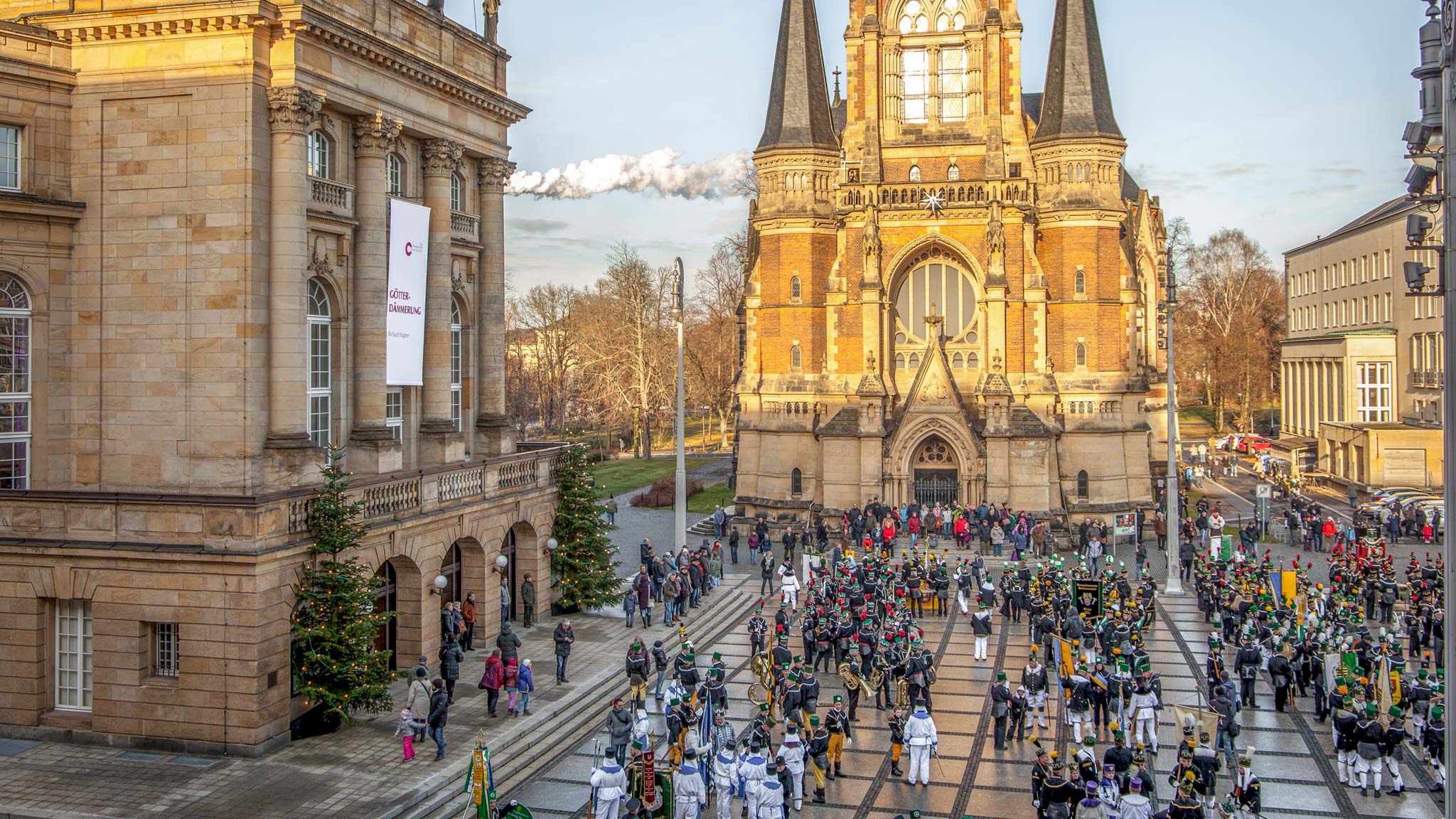
Post-parade, I’m keen to make the most of my last moments in the Ore Mountains and hunt for a final few gifts from the city’s Christmas Market. Coating the whole central square, it’s grander than Seiffens yet more restrained than those in Dresden.
After an hour strolling between stalls, a family-friendly Ferris Wheel, and a slightly out-of-place pyramid, I take respite on the top floor of the city’s department store — the cafe has decent views across the market and Chemnitz’s remaining historic buildings.
Spotting the time, I realise my sleigh (or rather, high-speed train) will soon whisk me back to Berlin and onwards to a decidedly unfestive Portugal — but still, thirty minutes is enough time for one last glühwein, right?
